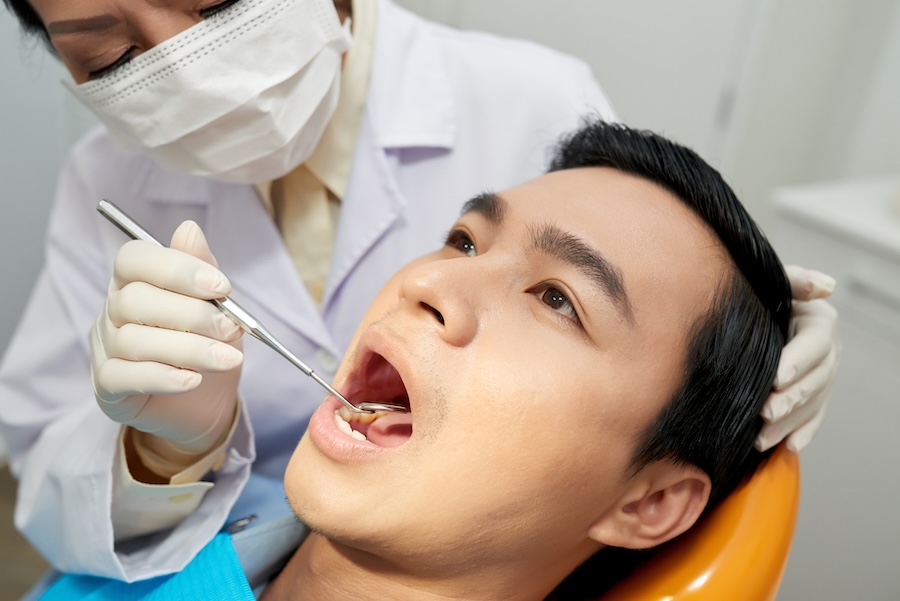The prudent use of antibiotics in dental treatments is a topic of significant importance and ongoing debate within dentistry. When used appropriately, these potent agents can be the fulcrum for preventing and managing oral infections. This article delves into the nuanced scenarios where antibiotics in dental treatments are not only justified but necessary and how their judicious use can prevent potential complications while safeguarding against the rise of antibiotic resistance.
In dental care, antibiotics are adjuncts to the mechanical removal of infections, such as tooth extractions and root scaling. Their use is crucial when the body’s immune response is insufficient to address an infection. For example, our dentists in Calgary prefer prescribing antibiotics for acute oral infections, such as abscesses, to contain the spread of infection and are often vital to patient recovery.
Antibiotics in Prophylactic Dental Care
Prophylactic antibiotics in dental treatments are administered to forestall infections before they manifest, particularly in patients with specific health risks. Those with cardiac conditions susceptible to infective endocarditis or individuals with compromised immune responses may require antibiotics before undergoing dental procedures that could introduce bacteria into the bloodstream.
The reasoning behind prophylactic use is rooted in the prevention of bacteremia (the presence of bacteria in the blood), which can occur during various dental procedures.
Here, we delve deeper into this practice:
Identifying High-Risk Patients
Cardiac Concerns: Patients with certain heart conditions, such as those with artificial heart valves, a history of infective endocarditis, or specific congenital heart defects, are at an increased risk for complications arising from bacteremia. The American Heart Association provides clear guidelines on when antibiotics in dental treatments are recommended for these patients.
Immunocompromised Individuals: Those with weakened immune systems, including patients undergoing chemotherapy, individuals with HIV/AIDS, or those who have had organ transplants and are on immunosuppressive drugs, may also require prophylactic antibiotics before dental work to prevent opportunistic infections.
Other Considerations: Patients with prosthetic joints or certain types of vascular grafts may also be advised to take prophylactic antibiotics as a precautionary measure. However, recent guidelines have become more conservative regarding their use in these populations.
Types of Dental Procedures
Invasive Procedures: Dental interventions that are more likely to cause bleeding, such as tooth extractions, periodontal procedures, implant placement, and root canal treatment, may necessitate prophylactic antibiotics in dental treatments.
Non-invasive Procedures: Prophylactic antibiotics may not be required for procedures that do not typically involve manipulation of the gingival tissue or the periapical region of teeth or that do not perforate the oral mucosa.
Timing and Dosage
Pre-treatment Administration: Antibiotics in dental treatments are typically given before the procedure begins, often within an hour of the start time, to ensure adequate blood levels of the antibiotic during and immediately after the procedure.
Dosage Considerations: The dosage is calculated based on the specific antibiotic’s pharmacokinetics to achieve the necessary efficacy without contributing to resistance.
Antibiotic Selection
First-line Antibiotics: The most commonly prescribed antibiotics for prophylaxis in dental treatments are those in the penicillin class due to their effectiveness against the bacteria commonly found in oral infections.
Allergies and Alternatives: For patients allergic to penicillin, other antibiotics such as clindamycin, azithromycin, or clarithromycin may be used.
Contemporary Challenges and Considerations
Resistance Concerns: With the growing issue of antibiotic resistance, the prophylactic use of antibiotics in dental treatments is carefully considered, limiting use to those who would benefit most.
Evolving Guidelines: Research is ongoing to continually update guidelines and practices, ensuring that the use of prophylactic antibiotics in dental treatments aligns with the latest evidence to optimize patient safety and minimize the development of resistance.
Patient Education and Compliance
Informing Patients: Dental professionals must explain the reasons behind using prophylactic antibiotics in dental treatments, the risks of not taking them, and the importance of following the prescribed regimen.
Monitoring Compliance: Ensuring patients adhere to the prophylactic protocol is crucial for the antibiotics to effectively prevent potential infections.
In-Depth Exploration on Usage of Antibiotics for Dental Issues
Antibiotics for Acute Dental Infections
Antibiotics in dental treatments become essential when dealing with acute infections. Dental abscesses, if left untreated, can pose severe systemic risks. In such instances, antibiotics work alongside dental interventions to combat the infection and prevent its spread.
Prophylactic Antibiotics in Dental Procedures
For certain at-risk populations, prophylactic antibiotics in dental treatments are a preventive measure to avert serious health complications. These preventive strategies underscore the importance of antibiotics as a protective measure rather than a treatment modality.
The Threat of Antibiotic Resistance
Overprescribing antibiotics has led to resistant bacterial strains, making some infections harder to combat. Each unnecessary prescription of antibiotics in dental treatments contributes to this global health threat.
Adhering to Guidelines
Dental professionals should prescribe antibiotics in dental treatments based on established guidelines that reflect current research and clinical evidence. These guidelines help to optimize patient outcomes and minimize the risk of resistance.
Educating Patients
Informing patients about the reasons for prescribing or withholding antibiotics in dental treatments is crucial. Patient adherence to prescribed antibiotic regimens is essential for their effectiveness.
Looking Ahead
The future of antibiotics in dental treatments may involve alternative therapies and advanced diagnostics, reducing the over-reliance on traditional antibiotics and allowing for more tailored and effective treatments.
Wrapping up
In understanding when antibiotics in dental treatments are necessary, dental professionals uphold their responsibility to their patients and the wider community, ensuring that these powerful drugs are used with the utmost care and consideration.
In conclusion, using prophylactic antibiotics in dental treatments is a targeted strategy to prevent infection in individuals at heightened risk for complications. It demands a personalized approach based on the patient’s health, the nature of the dental procedure, and the current best practices and guidelines.
Dental professionals can provide optimal care while stewarding the responsible use of these critical medications by meticulously considering the need for prophylactic antibiotics.



